“Waste is Design Flaw”: Sophie Thomas
Introduction
Life is a remarkable journey, filled with myriad experiences, emotions, and lessons. One of the fundamental truths about life is its impermanence. People come and go, circumstances change, and nothing remains the same forever. Instead of resisting this impermanence, we can learn to embrace it. By acknowledging the transitory nature of life, we become more adaptable and open to new possibilities.
Content: What is Circular Economy
- What is a Circular Economy?
- What is 3R?
- What is the purpose and benefits of 3R?
- Conclusion
Objective
The circular economy is an economic system that aims to eliminate waste and the continual use of resources by creating a closed-loop system. In a circular economy, products, materials, and resources are kept in use for as long as possible, extracting the maximum value from them while in use, and then recovering and regenerating products and materials at the end of each service life.
By the time you complete reading the article, approximately 2500 Tonne of Plastic will be produced, half of which will be for SINGLE use!
This framework encourages actions that lead to reducing materials consumed in the production process, activities that promote reuse or repurposing to avoid waste and recycling initiatives within the organization.
Once you go through the article, you will understand the meaning of circular economy, what 3R is, what is their purpose and how it can help the organization to the path of sustainability.
Read More: https://bit.ly/LinearCircularEconomy
Definition: ISO 59004: 2024
Circular Economy (Cl 3.1.1): Economic system that uses a systematic approach to maintain a circular flow of resources by recovering, retaining or adding to their value while contributing to sustainable development.
Sustainable Development (Cl 3.1.11): Development that meets the environmental, social economic needs of the present without compromising the ability of the future generations to meet their own needs.
Life Cycle (Cl 3.2.4): Consecutive and interlinked stages in the life of a solution.
Linear Economy (Cl 3.5.10): Economic system where resources typically follow the pattern of extraction, production, use and disposal.
End of Life (Cl 3.5.30): <Product> point in time when a product is taken out of use and its resources are either recovered for processing or is disposed of.
Life Cycle Assessment (Cl 3.6.8): Compilation and evaluation of the inputs, outputs and potential environmental impacts of a product system throughout its life cycle.
Read More: http://bit.ly/CommonSpecialCause
Detailed Information
The circular economy is considered the leg of sustainability since it influences the entire supply chain process. German chemist Michael Braungart and American architect William McDonough (often referred to as the “father of circular economy”): wrote a book in 2002, “Cradle to Cradle: Remaking the Way We Make Things,” that envisioned products being designed to regenerate ecosystems instead of harming them.
Read More: http://bit.ly/AttributeCharts
Linear Economy:
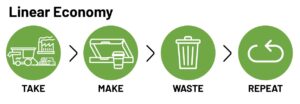 Linear processes dominate our current industrial economy. Imagine a massive network of conveyor belts where goods are produced, used and ultimately discarded. This one-way flow has a clear beginning and end.
Linear processes dominate our current industrial economy. Imagine a massive network of conveyor belts where goods are produced, used and ultimately discarded. This one-way flow has a clear beginning and end.
Read More: https://bit.ly/StopLightControl
Circular Economy:
 The circular economy is a model of production and consumption, which involves sharing, leasing, reusing, repairing, refurbishing and recycling existing materials and products as long as possible. In this way, the life cycle of products is extended.
The circular economy is a model of production and consumption, which involves sharing, leasing, reusing, repairing, refurbishing and recycling existing materials and products as long as possible. In this way, the life cycle of products is extended.
In practice, it implies reducing waste to a minimum. When a product reaches the end of its life, its materials are kept within the economy wherever possible thanks to recycling. These can be productively used again and again, thereby creating further value.
A circular economy keeps materials and products in circulation for as long as possible.
Read More: https://bit.ly/SPCGoalpost
3R (Reduce, Reuse and Recycle)
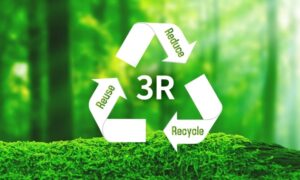 The circular economy is a strategy that can lead to sustainable production and consumption, which is critical for decoupling development from environmental concerns. The circular economy is governed by the 3Rs, namely Reduce, Reuse, and Recycle, which are the major strategies for the eco-friendly processing of products. Both circular economy and the 3Rs concept are interchangeable in the waste management process.
The circular economy is a strategy that can lead to sustainable production and consumption, which is critical for decoupling development from environmental concerns. The circular economy is governed by the 3Rs, namely Reduce, Reuse, and Recycle, which are the major strategies for the eco-friendly processing of products. Both circular economy and the 3Rs concept are interchangeable in the waste management process.
In the 3Rs concept, the word Reduction has a much wider scope and emphasis on waste reduction at various sequences of production processes and different stages of consumption.
Read More: http://bit.ly/DifferenceMeanMedianMode
Example of 3R in Daily Life
Reduce: Reduce the number of materials and goods you consume. This might mean limiting the number of purchases you make in the first place. To determine your true needs and avoid impulse buys, try the three-day rule: if you want to buy something non-essential, wait three days. If you’re still thinking about it three days later, then you can buy it. More than likely, you will have forgotten about it.
 Example: Buying foods in bulk often means less packaging waste, turning off lights when you’re not in the room, unplugging electronics when not in use, and fixing drippy faucets.
Example: Buying foods in bulk often means less packaging waste, turning off lights when you’re not in the room, unplugging electronics when not in use, and fixing drippy faucets.
Reuse: Reusing is the act of taking old items that you might consider throwing away and finding a new use for them.
Example: LPG Gas Cylinder refilling, Jars from grocery store foods can be used to store leftovers or to take lunch to work. Use old clothing as cleaning rags, working computers and parts can often be donated to community centers or charitable organizations. Clothing can often be donated and given a second life.
Recycle: Convert the scrap into useable.
Example: Recycling paper, plastic and metal materials.
Example of 3R related to Waste Management
- Reduce means to cut back on the amount of trash we generate.
Example: Pack your lunch in a lunchbox, bring reusable bags to the grocery store, and say no to bottled water.
- Reuse means finding new ways to use things that otherwise would have been thrown out.
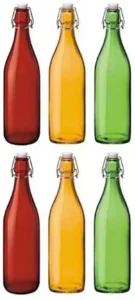 Example: Clear your wardrobe and gift clothes which are not in use, share your toys, find a new use for an old item.
Example: Clear your wardrobe and gift clothes which are not in use, share your toys, find a new use for an old item.
- Recycling means turning something old and useless into something new and useful. Recycling is changing discarded materials into new products to avoid using more virgin resources.
Example: Plastic milk jugs converted into picnic benches, playground equipment and recycling bins
Example of 3R in the Automotive Sector
① Reduce: Reduce waste generation, including extending battery life.
② Rebuilt and Reuse
Rebuilt: 2nd life as automotive batteries
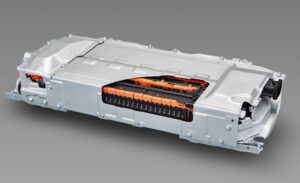 Reuse: Reuse the batteries in non-automotive applications (e.g., stationary, energy management, etc.)
Reuse: Reuse the batteries in non-automotive applications (e.g., stationary, energy management, etc.)
③ Recycle: Find use as recycled materials and resources
Actions related to 3R in Industry:
- United Kingdom’s £200 (US$226) per tonne tax on plastic packaging that doesn’t include at least 30% recycled plastic. This approach is driving up market demand for recycled content and encourages companies to adopt recycled plastic solutions.
- Right to Repair legislation, which requires manufacturers to modify product design and make parts available to allow consumers to mend products. The right to repair is being adopted in Europe for electronic goods but could be applied to other products.
Conclusion:
Overall, the circular economy aligns better with long-term environmental, economic, and social goals, making it a more viable model for a sustainable future. It offers a sustainable alternative to the traditional linear economy, aiming to create a more resilient and sustainable future.
Read More: http://bit.ly/CommonSpecialCause
References:
ISO 59004: 2024
ISO 59010: 2024
ISO 59020: 2024
Industry Experts
This is the 219th article of this Quality Management series. Every weekend, you will find useful information that will make your Management System journey Productive. Please share it with your colleagues too.
In the words of Albert Einstein, “The important thing is never to stop questioning.” I invite you to ask anything about the above subject. Questions and answers are the lifeblood of learning, and we are all learning. I will answer all questions to the best of my ability and promise to keep personal information confidential.
Your genuine feedback and response are extremely valuable. Please suggest topics for the coming weeks.
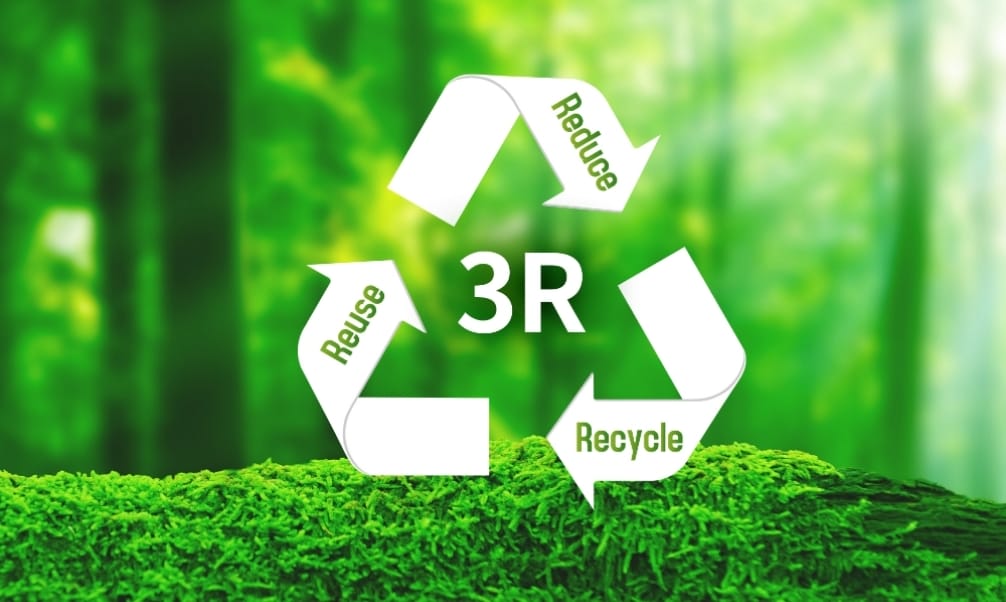
Leave a Reply
You must be logged in to post a comment.